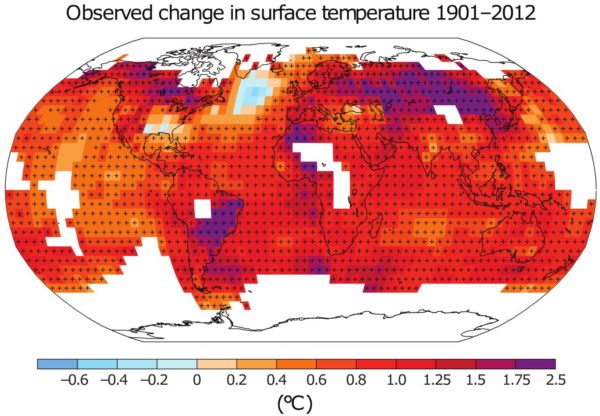Environment & Energy
Related: About this forumReal Climate - If You Doubt The North Atlantic Conveyer (AMOC) Is Weakening, Read This
A few weeks ago, we’ve argued in a paper in Nature that the Atlantic overturning circulation (sometimes popularly dubbed the Gulf Stream System) has weakened significantly since the late 19th Century, with most of the decline happening since the mid-20th Century. We have since received much praise for our study from colleagues around the world (thanks for that). But there were also some questions and criticisms in the media, so I’d like to present a forum here for discussing these questions and hope that others (particularly those with a different view) will weigh in in the comments section below.
Exhibit #1, and the prime observational finding, is a long-term cooling trend in the subpolar Atlantic – the only region in the world which has cooled while the rest of the planet has warmed. This ‘cold blob’ or ‘warming hole’ has been shown in IPCC reports since the 3rd assessment of 2001; it is shown in Fig. 1 in a version from the last (5th) IPCC report. In fact it is Figure 1 of the Summary for Policy Makers there – you can’t get more prominent than that.

Fig. 1 Observed temperature trends since the beginning of the 20th Century (Figure SPM1 of the last IPCC report).
I think there is a consensus that this is a real phenomenon and can’t be explained away as a data problem. According to NOAA, 2015 was the coldest year in this region since record-keeping began in 1880, while it was the hottest year globally. The key question thus is: what explains this cold blob? In 2010, my colleagues Dima and Lohmann from Bremen were the first (as far as I know – let me know if you find an earlier source) to suggest, using sea surface temperature (SST) pattern analyses, that the cold blob is a tell-tale sign of a weakening AMOC. They wrote that
“the decreasing trend over the last seven decades is associated to the weakening of the conveyor, possibly in response to increased CO2 concentrations in the atmosphere”
(with ‘conveyor’ they refer to the AMOC). One of several arguments for this was the strong anti-correlation pattern between north and south Atlantic which they found using canonical correlation analysis and which is the well-known see-saw effect of AMOC changes.
I have since become convinced that Dima and Lohman were right. Let me list my main arguments upfront before discussing them further.
1. The cold blob is a prediction come true. Climate models have long predicted that such a warming hole would appear in the subpolar Atlantic in response to global warming, due to an AMOC slowdown. This is seen e.g. in the IPCC model projections.
2. There is no other convincing explanation for the cold blob. There is strong evidence that it is neither driven by internal atmospheric variability (such as the North Atlantic Oscillation, NAO) nor by aerosol forcing.
3. A range of different data sets and analyses suggest a long-term AMOC slowdown.
4. Claims that the slowdown is contradicted by current measurements generally turn out to be false. Such claims have presented apples-to-oranges comparisons. To the contrary, what we know from other sources about the AMOC evolution is largely consistent with the AMOC reconstruction we presented in Nature.
Let us look at these four points in turn.
EDIT
http://www.realclimate.org/index.php/archives/2018/05/if-you-doubt-that-the-amoc-has-weakened-read-this/#.Wwv1jbPRmQw.twitter